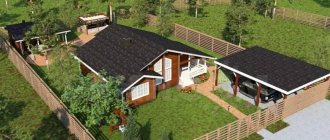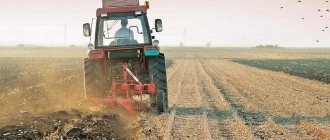Our land law company offers a turnkey procedure for transferring land from agricultural use to SNT/DNP.
Non-profit gardening partnerships must be located on agricultural lands. They are intended for growing agricultural crops, and the construction of country-type houses is allowed on the plots. Such a partnership is formed to implement the non-commercial goals of its participants. In fact, people do not receive any profit from owning land, but it feeds them.
Considering the state of the economy and the pricing policy of the state, the popularity of such partnerships is quite high, and more and more land is being transferred to them. When reselling large plots (from several tens of hectares) of agricultural land transferred to SNT, entrepreneurs receive significant profits. However, it is important to know exactly the transfer procedure and the procedure for choosing the territory in which you can make money.
Selecting a land plot for transfer to SNT
- Members of the partnership pay contributions for infrastructure development. By purchasing agricultural land with developed infrastructure, you will be able to sell it faster and with greater profit.
- Consider the location of the site. The most attractive options are located near populated areas and near transport interchanges.
- The quality and fertility of the soil are of great importance. Take this into account when searching for land.
- It is important to determine in advance the area of land to be purchased.
- Don’t forget about the environmental component and the very possibility of transferring to SNT. Our company’s specialists will help you understand all the nuances of choosing such land. They will also offer the most suitable options for making a profit.
Can it be used for farming?
Categories of land are established and enshrined in legislation in the first chapter of the Land Code , in Articles 7 and 8 of the Land Code of the Russian Federation. According to the provisions of Article 42 of the Land Code of the Russian Federation, they can only be used in accordance with the established category. Accordingly, plots from among the agricultural lands can be used for dacha farming, but only on the condition that they relate to the corresponding intended purpose and are intended for dacha farming (about what can and cannot be done on agricultural lands, as well as about the characteristics such areas, we wrote in our material).
The conditions are specified in Federal laws:
- dated April 15, 1998 No. 66-FZ;
- dated 07.2017 N 217-FZ.
In addition, a dacha and gardening enterprise is a legal entity , which is the founder who has purchased or leased from the administration land tracts located outside the city limits:
- in the location of rural settlements;
- in an uninhabited area.
The following types of activities are allowed here:
- gardening;
- planting a vegetable garden;
- dacha developments on the site.
Reference. The construction of a house on such sites is not a prerequisite. The main thing is soil cultivation and the presence of cultural plantings.
We wrote here about how to organize SNT on agricultural lands and what can be built on such plots.
The procedure for transferring agricultural land to SNT/DNP
- Registration of a legal entity (SNT/DNP);
- Preparation and approval of a package of urban planning documentation for a land plot. General plan, land use and development rules, territorial zoning, clarification of site boundaries;
- Preparation and approval of a land planning project;
- Carrying out land surveying of roads and public areas;
- A petition to change the type of permitted use to the district administration;
- Passing public hearings;
- If necessary, passing examinations (ecology, archeology, Ministry of Agriculture);
- If necessary, making changes to the general plan, territorial zoning, land use protection zone;
- Registration of changes in Rosreestr.
Legal support for the creation of SNT
In addition to changing the type of permitted use of a land plot to create a SNT, our company’s specialists will help you:
- Register a legal entity (SNT/DNP);
- Prepare and approve the PPT;
- Allocate and register public lands;
- Obtain permission to build a road;
- Agree on the allocation of electrical power;
- Conduct initial meetings of SNT members;
Our land legal specialists offer full legal support for the creation of SNT/DNP and representation of the customer’s interests in the administration of the district, region, and Rosreestr.
For construction
If before 2015, the construction of a country house was allowed according to the standards developed by the constituent documentation, then from March 15, 2015, after the adoption of Federal Law No. 171-FZ of June 23, 2014, regulations for country house construction were established. The established standards for setbacks from neighboring areas and red line standards are observed in accordance with the Code of Rules SP 53.13330.2011, fire safety standards are regulated by Federal Law No. 123-FZ, dated July 22, 2008.
You can build a house on agricultural land in the following cases::
- When joining SNT, DNT, DNP, etc., if this legal entity has formalized the land for rent or ownership (how to formalize the lease of agricultural land is written here, and we wrote about how to draw up a lease agreement here ).
- Without entry, when registering a land plot with the administration of the locality on your own, and receiving an administrative decision on the use of land for a summer residence.
It is prohibited to use the following types of agricultural land for construction::
- If they are intended for pastures, water meadows and other livestock needs.
- If the top layer of the site has unique characteristics and belongs to a variety of particularly fertile soils, it remains in the use of municipal authorities.
- If the use of the site blocks a passage or passage to a road, body of water or otherwise violates the rights of third parties.
- When a water reclamation structure is located on it.
- Unregistered land plots for ownership, lease or other conditions allowing construction.
Important . The erection of unauthorized construction is subject to administrative liability with the imposition of penalties and requirements for the cancellation of the structure.
Whether it will be allowed to build a house on agricultural land is discussed in a separate article, and what can and cannot be built on such plots is written here.
What agricultural land cannot be converted into gardening and horticulture?
When converting a site into land intended for gardening, the level of soil fertility should be taken into account. A low level of fertility in itself is not a reason to refuse to convert agricultural land to horticulture. This basis will be the conclusion of the environmental assessment. But most often the impossibility of translation is associated with other problems.
As a general rule, agricultural plots are located outside populated areas, which means:
- They are not equipped with the communications necessary for gardening.
- There are no access roads of sufficient quality for farming.
This creates additional difficulties when transferring land to SNT. The previous use of the plot must also be taken into account.
On the territory allocated for agricultural production, it is allowed to build certain real estate objects. They are used to support the activities of agricultural enterprises. But such buildings are prohibited on the territory of gardening associations. Therefore, an application for transfer to gardening or horticulture will not be satisfied until these structures are dismantled.
You should also take into account other nuances that affect the possibility of changing the type of use of the allotment:
- There should be no illegal buildings on the territory;
- the site should not be taken out of circulation or mothballed;
- it is important to consider the absence of encumbrances, arrests and other restrictions;
- Agricultural land should not be classified as particularly valuable natural areas.
The presence of a legal dispute regarding the land that needs to be converted into gardening or horticulture will also become an obstacle to the satisfaction of the application.
You can find out the details from the lawyers of our company. We will check the possibility of transferring the site to this type of use, eliminate existing difficulties and prepare the necessary documents. Or we will advise you on these issues.
Reasons for changing the category of land
Initially, agricultural land is intended for the purpose of growing crops or raising livestock. Therefore, the buildings permitted by law on them are storage facilities, cowsheds, pigsties, cellars for root crops, etc. All such buildings absolutely do not require assignment of a postal address and registration for residence.
However, many landowners want to build a cottage or dacha on their plots, which can become property, be inherited, and have value. This does not apply to the above buildings, so they need to have legal status. To do this, they need to be registered as a residential building, not a barn.
If the registration is successful, the site will now be classified as settlement land. The authorities will have to clean the roads and improve the surrounding area. Residents will have the right to demand the installation of communications: gas, water supply, and so on.
What should be in the PPT and the land surveying project when transferring a site to horticulture?
The territory planning project (PPT) is drawn up to ensure the normal development of lands related to horticulture. The presence of this project allows you to establish the boundaries of plots, place linear objects, determine the location of streets, passages and other elements. In order to organize targeted activities in the territory that is being transferred to horticulture, the PTT must contain:
- places of red lines;
- designation of roads and passages;
- notes on the location of communication lines;
- places for laying communications;
- provisions on the placement of various objects.
If the planning project is correctly drawn up, land owners will be able to easily cut off a plot of land and legalize the construction of shops and other facilities on the territory of SNT. Thanks to the PPT, it will be possible to increase the power supply capacity, if necessary, or develop a water supply scheme. For these purposes, this project includes the justification and calculation of the facilities required to carry out the target activities.
Based on the PPT, a land surveying project is being developed. It contains the following information:
- list of areas to be formed;
- the area of each plot;
- what lands will become public areas;
- where the boundaries of streets and other roads lie;
- locations of red lines;
- within what limits do easements apply?
The land surveying project makes it possible to establish the boundaries of undeveloped areas, which will subsequently be provided for use by citizens or organizations. The structure of these projects is approved at the legislative level. When preparing them, the requirements of relevant legal acts are taken into account. The lawyers of our company will help you understand the peculiarities of the structure of the PPT and the land surveying project.
How to challenge a refusal to transfer a plot of land for gardening?
If there is a possibility of transferring a plot of land for gardening and horticulture, and all documents confirming this fact have been collected, but the service is refused, you must go to court. To prevent the judge from dismissing the claim, you will have to carefully prepare for the trial.
- Start by collecting documentation to prove that the procedure has been followed and that the land can be converted to gardening. The exact list of papers depends on the situation, but usually it includes the results of the project examination, approvals from various departments and extracts from the register.
- Then you should file a claim with the authority that made the negative decision. In it, point out the mistakes made, refer to the groundlessness of the refusal and ask to change the type of use of the site.
- The claim has been rejected again or ignored - prepare a statement of claim. The same documents are attached to it as to the complaint, but a receipt for payment of the fee and the results of the pre-trial procedure are added.
Before the trial, it is advisable to check the position of the site in the town planning regulations. This document specifies acceptable uses within one category. Gardening and horticulture should be on the list of permitted VRIs.
When the preparation is completed, you can proceed to drawing up the claim. In essence, it repeats the claim filed earlier:
- the grounds do not comply with the law;
- how this statement is confirmed;
- what the legal norms say about the situation;
- demands to cancel the refusal and change the VRI.
But the structure of the claim and its details will be somewhat different. It is important to correctly indicate the judicial authority, as well as the details of the parties. The defendant is the agency that issued the refusal (local administration). It is necessary not only to refute the reasons given in the negative decision, but also to provide sufficiently compelling arguments that the transfer of the site to horticultural land is possible. And these arguments must be supported by documents. Our company's lawyers will help you collect evidence and represent your interests in court. We will challenge the refusal with a guarantee.
We will transfer your land plot to SNT
Our company's land lawyers offer services for the transfer of agricultural land to the land of settlements, or inclusion in the settlement, and also challenge refusals to change the type of permitted use of land for clients who have tried to carry out this procedure on their own.










